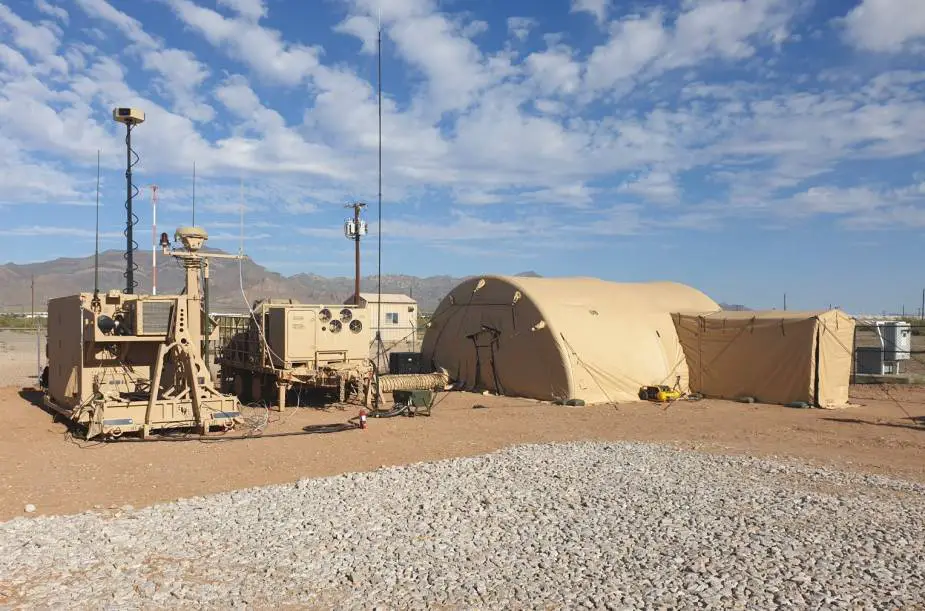The U.S. Army Integrated Fires Mission Command (AIAMD) and soldiers of the 3rd Battalion, 43rd Air Defense Artillery Regiment, conducted a successful missile flight test with the Integrated Air & Missile Defense Battle Command System at White Sands Missile Range, New Mexico on November 17, 2022.
Follow Army Recognition on Google News at this link

Army Integrated Air and Missile Defense (AIAMD) integrates current and future Air and Missile Defense (AMD) Sensors, Weapons, and Mission Command technologies into an Integrated Fire Control System, provides a single air picture, increases defended area, and provides flexibility in systems deployment (Picture source: U.S. Army)
“Today our troops continued to show great proficiency with the Integrated Air and Missile Defense Battle Command System,” said Brig. Gen. Frank Lozano, Program Executive Officer, Missiles and Space. “The success of this test confirms that IBCS is advancing along the right path in becoming the foundation of our nation’s modernized Air & Missile Defense capabilities. I want to thank all our outstanding Soldiers who proved, once again, to be remarkably effective in their mission of standing prepared to defend our Nation.”
The Special Test Event, directed by the Air and Missile Defense Test Directorate Operational Test Command, had a test objective of demonstrating Army Integrated Air & Missile Defense capability to execute a kill chain against a ground-launched cruise missile surrogate. IFMC is managed by the Program Executive Office Missiles and Space, Redstone Arsenal, Alabama.
The 3-43 ADA soldiers executed the successful engagement using the IBCS, Patriot and Sentinel radars with adapted PATRIOT launchers using PATRIOT interceptors. Preliminary indications are that the planned flight test objectives against the cruise missile threat were achieved, and the target was successfully intercepted.
“This successful test confirms that IBCS is well positioned to combat the present and future threats to our Nation and allies,” said Army Col. Chris Hill, Project Manager of the IFMC Project Office, Huntsville, AL. “I want to thank the outstanding Soldiers from 3-43 ADA BN and the Integrated Fires Mission Command Office who, once again, showed their remarkable professionalism and resilience in demonstrating this capability in support of our Nation’s defense. We will continue to be responsive to Warfighter requirements and work as an integrated team committed to modernizing our Army.”
IBCS continues to demonstrate the capability to become the next generation Air and Missile Defense Command and Control for the U.S. Army.
Description
Army Integrated Air and Missile Defense (AIAMD) integrates current and future Air and Missile Defense (AMD) Sensors, Weapons, and Mission Command technologies into an Integrated Fire Control System, provides a single air picture, increases defended area, and provides flexibility in systems deployment. The Integrated Battle Command System (IBCS) is the fire control and operational center capability that provides greater defense effectiveness than what can be provided in the current single-sensor fire unit construct. IBCS develops composite tracks from sensor measurement data provided by each sensor in the task force and develops weapon-firing solutions based off the composite track data. This method provides a more accurate target track and more weapon battlespace than current systems can provide. The IBCS provides a common engagement operations center and data-sharing capability for all echelons of Army AMD, through all domains of military operations.
Benefit to the soldier
The AIAMD architecture provides the framework to distribute fire control quality data, commands, and messaging among components in near real-time to provide a coordinated and integrated response to synchronized complex threat raids. The data construct is a self-healing system capable of automatic fail-over and rapid reconfiguration of components providing a more resilient defense with fewer single-point failures. IBCS provides dynamic defense design capability to maintain optimal defense in accordance with the supported force scheme of operations and maneuver. The architecture enables extended range and non-line-of-sight engagements across the full spectrum of AMD threats. It mitigates coverage gaps and single points of failure, and reduces manpower, operation, and support costs while providing enhanced training capability.
Specifications
• Engagement Operations Center components provide a common Integrated Fire Control capability and include the Integrated Collaborative Environment and a trailer
• Integrated Fire Control Relay for fire control connectivity and distributed operations includes a Fire Control Network Radio
• Plug-and-fight kits network enable multiple sensor and weapon to communicate with the IBCS Engagement Operations Center
• Common software fuses data, creates a Single Integrated Air Picture, and will select the most appropriate weapon needed to defeat AMD threats effectively and efficiently














